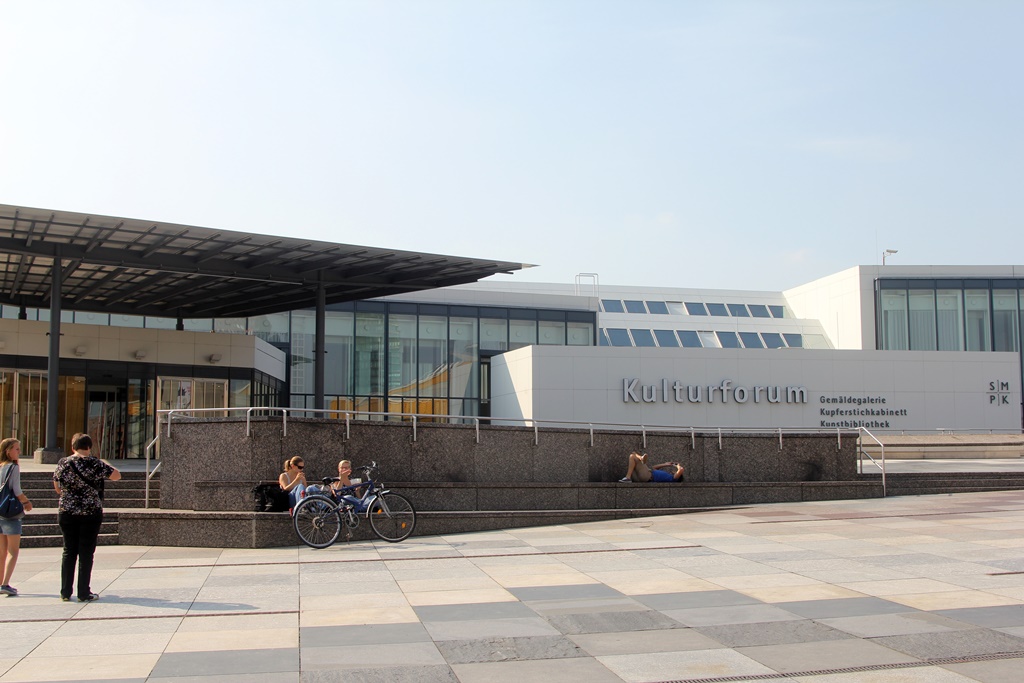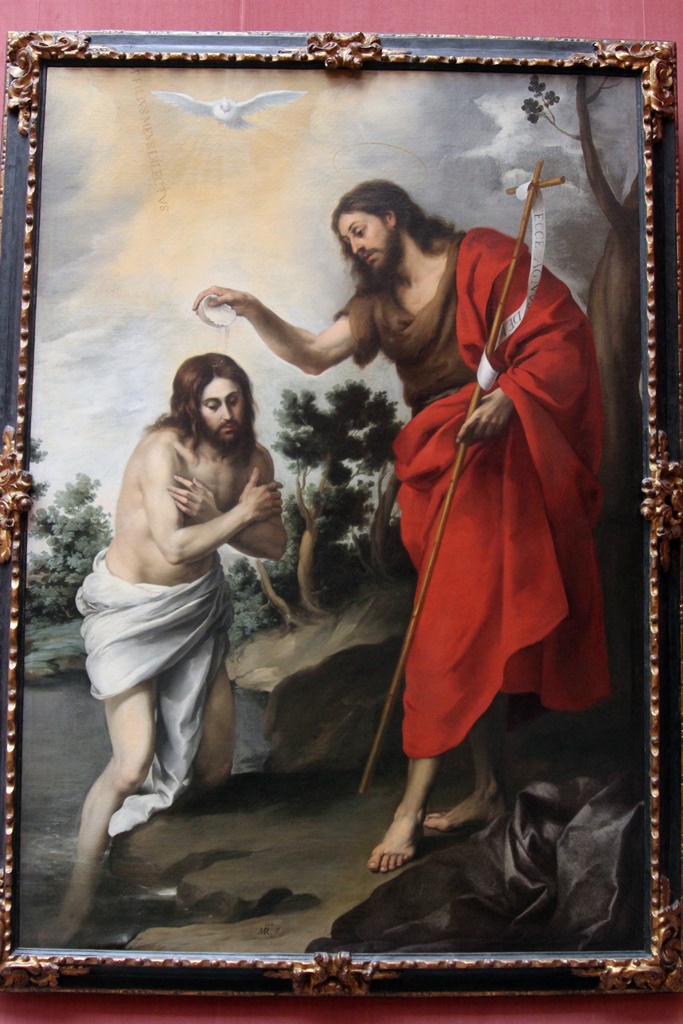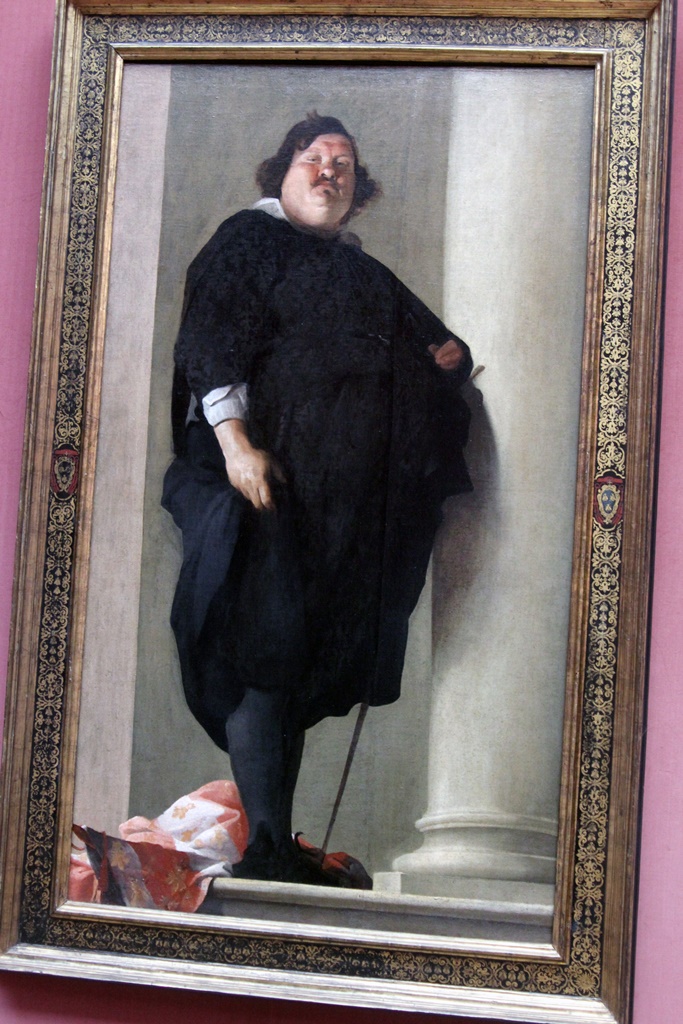Gemäldegalerie
The Berlin Gemäldegalerie
is home to Berlin’s (and probably Germany’s) top collection
of 13th-18th Century European paintings. Gemälde is a German word for "painting",
and there are several gemäldegaleries in the German-speaking regions of Europe, but
Berlin’s is by far the most comprehensive. Approximately 1250 works are on display,
out of a total collection of about 3000. The collection was amassed with the intention
of representing the full range of European painting from this period of time, but the
Italian, Flemish/Dutch and German collections are the highlights. Unlike many European
museums, the Gemäldegalerie’s collection does not primarily come from a private
collection belonging to a royal family, but is instead the result of a long-term,
deliberate program of acquisitions, which was begun in earnest by the Prussian government
in 1815.
The museum itself first opened in 1830 as the Royal Museum, and was located on an island
in the Spree (now known as the Museumsinsel – more on this later), together with
a collection of antiquities, in a building now known as the Altes Museum (old
museum). In 1904 the museum moved to a new building on the same island and became known
as the Kaiser Friedrich Museum. It remained here through World War II, but most of its
works were moved at that time to safer locations throughout the country, to protect them
from war-related damage. A good thing, as 400 of the museum’s works that were not so
easy to move (such as large altarpieces) were lost to a fire during the war, and many
others were lost to looting.
After the war, the remaining collection was divided between the Soviet-controlled sector
of the city (which encompassed the Museumsinsel) and the western sector, where the
West’s portion was housed in a museum in Berlin’s Dahlem district. Acquisitions were
continued for the Dahlem museum, and eventually the administrations of the museums were
reunified, in 1992. But the collections remained separate until the completion of the
present building, in 1998. There is talk of relocating this nomadic museum yet again,
as there are plans for the expansion of a neighboring museum of modern art. But for
the time being it remains in a modern building, just west of Potsdamer Platz.
The Potsdamer Platz U-Bahn stop is where we exited the train with the objective of
visiting the Gemäldegalerie. On passing through Potsdamer Platz, we were struck by how
new everything in the area looked. This is a result of the history of the area.
Potsdamer Platz began in the 18th Century as a point just outside Berlin’s city wall,
adjacent to a customs gate called the Potsdam Gate (or Potsdamer Tor, named for its
location on the road to 15-mile-distant Potsdam). Over time, businesses sprang up to
serve the needs of those waiting in line to enter the city. Eventually the city
expanded, and the gate and the wall went away, but Potsdamer Platz did not. With the
larger city, Potsdamer Platz found itself in the middle of things, and eventually
became, by the early 20th Century, the busiest intersection in continental Europe. It
was surrounded by prestigious businesses, including department stores, restaurants,
hotels and entertainment venues, plus a major railroad station. The first electric
lights in Germany were turned on in Potsdamer Platz, as was one of its first traffic
signals, erected in a tower when the advent of automobiles led to monumental traffic
jams.
But things were to change drastically during World War II. Potsdamer Platz had the
unfortunate affliction of being located near Hitler’s Chancellery, a prime area for
allied bombing. The Platz did not make out well, being essentially reduced to
rubble. After the war some commercial activity began anew, but again the location of
the Platz worked against it. This location happened to be at the intersection of the
sectors of the city that were controlled by American, British and Soviet forces. It
didn’t take long for friction to appear between the Soviets and everybody else, and
painted lines appeared on the ground, followed by barbed wire and armed guards, and
eventually the Berlin Wall went up, right through the heart of the Platz. On the
eastern side of the wall was a cleared no-man’s land, and on the western side
commercial activity was limited, with the center of West Berlin business being
relocated farther west, to the Kurfürstendamm area.
After reunification, there was a movement to remake Potsdamer Platz as a business
center again, with a master plan featuring major construction roles by Daimler-Benz,
and then by Sony. Construction began in 1993, and nearly all of the buildings now
on the Platz were built since then. As we walked through the Platz, we were
especially struck by the Sony Center, completed in 2000. Apparently day traffic and
night life have returned in satisfying numbers to Potsdamer Platz, though there is
some concern about high vacancy rates in the new office buildings.

Sony Center, Potsdamer Platz

Inside the Sony Center
The Roof
We continued westward toward the Gemäldegalerie, which turned out to not be that
easy to find. While large, the museum is surrounded by other large museums and arts
venues in an area known as the Kulturforum. But with persistence and close attention
to posted signs, we were eventually able to locate the museum.
The museum is laid out as a large, mostly-empty central hall, surrounded by many
small rooms in which the paintings are exhibited. The standard route proceeds
through the small rooms in a clockwise direction around the central hall, though the
layout allows for easy selection of individual rooms by passing through the central
hall. We pretty much stuck to the standard route, which began with a large
collection of Italian paintings.
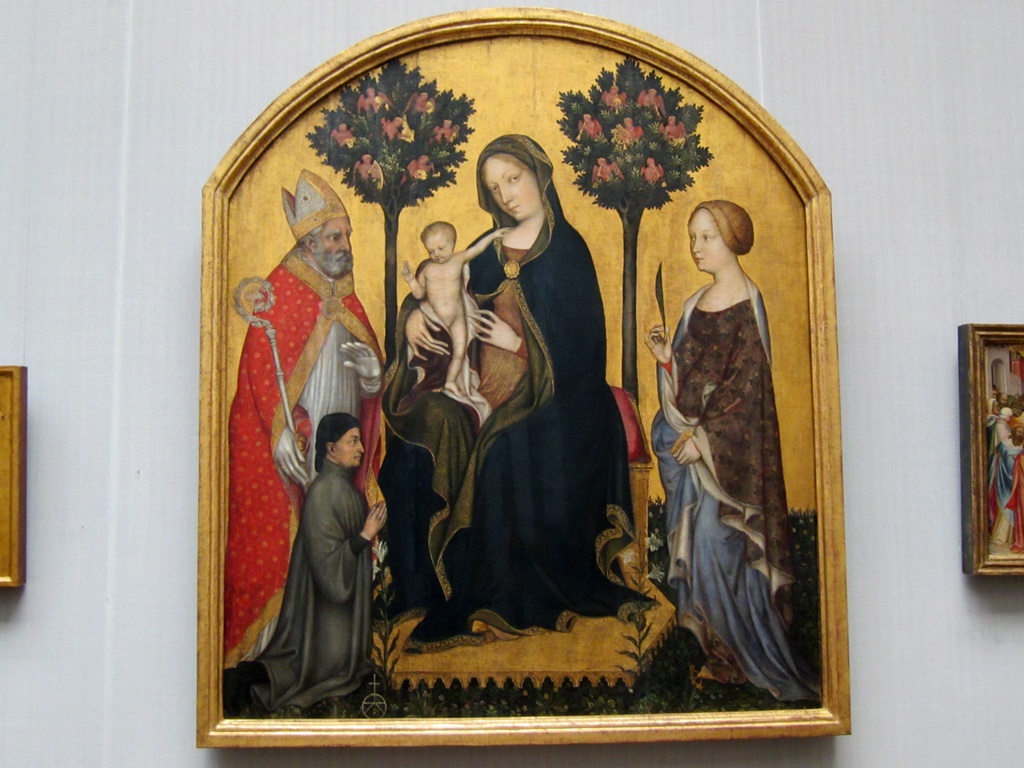
Enthroned Madonna and Child with Saints, Gentile da Fabriano (1395-1400)

Mary with Child and Singing Angels, Sandro Botticelli (ca. 1477)
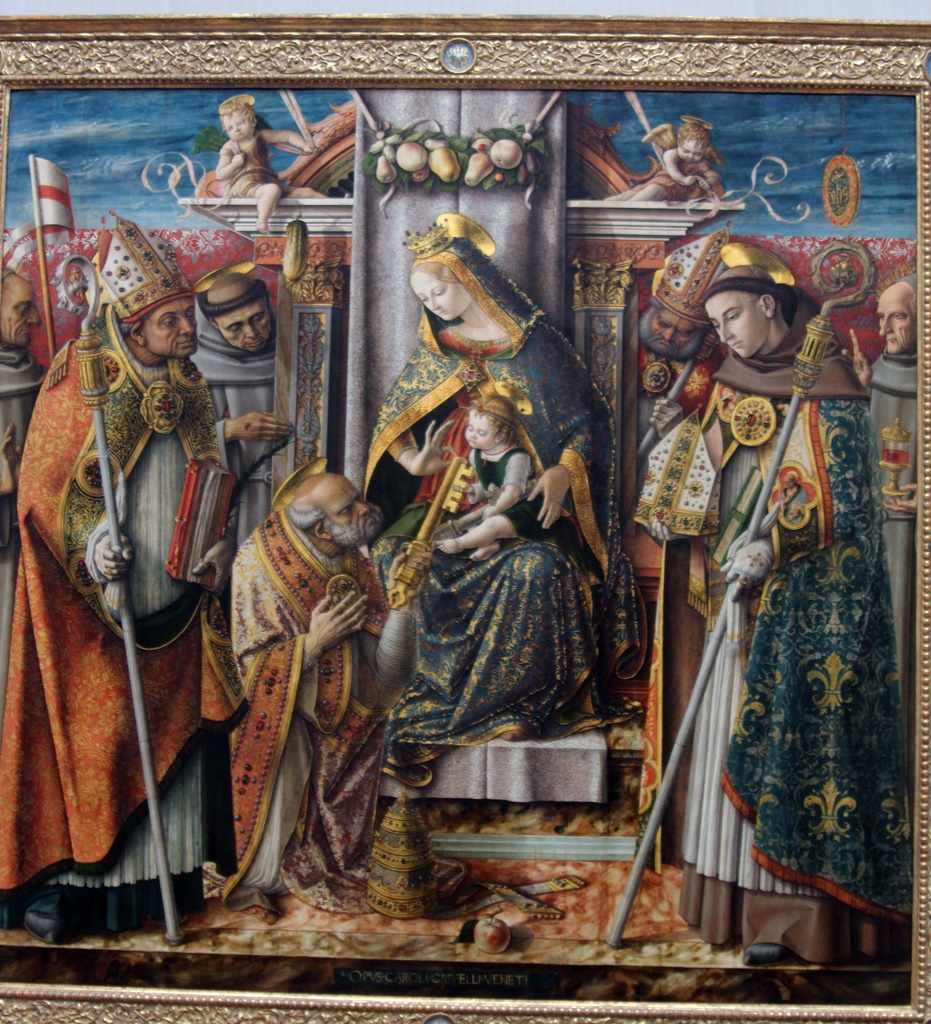
Enthroned Madonna and Child, with Peter and Saints, Carlo Crivelli
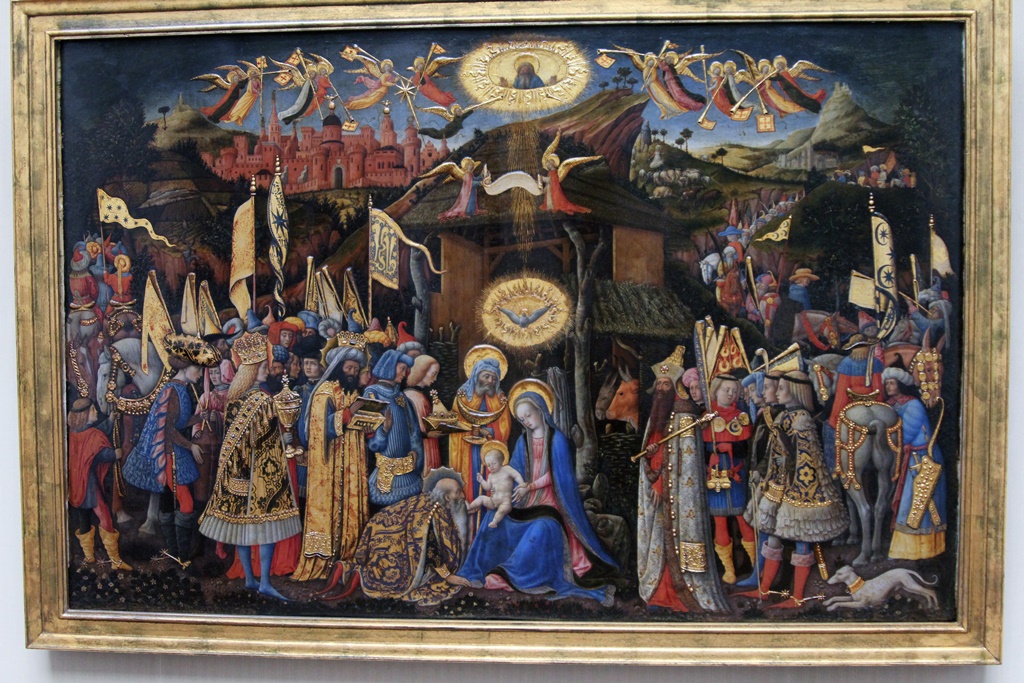
The Adoration of the Magi, Antonio Vivarini
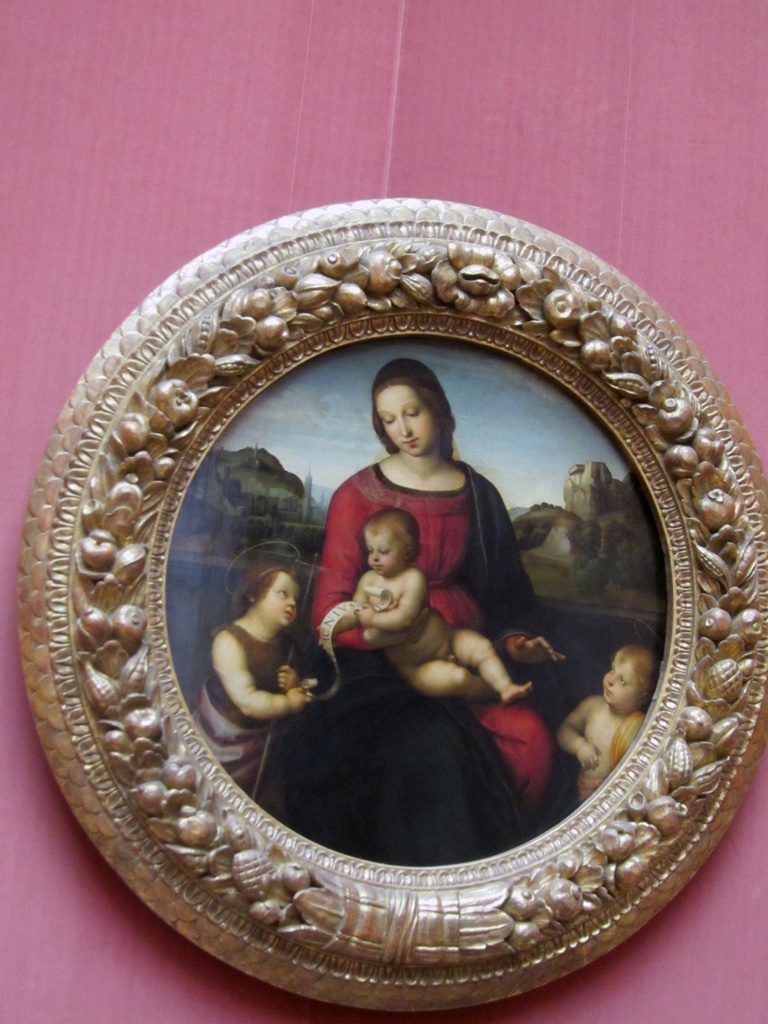
Mary with Child, John the Baptist and Angel, Raphael (ca. 1505)
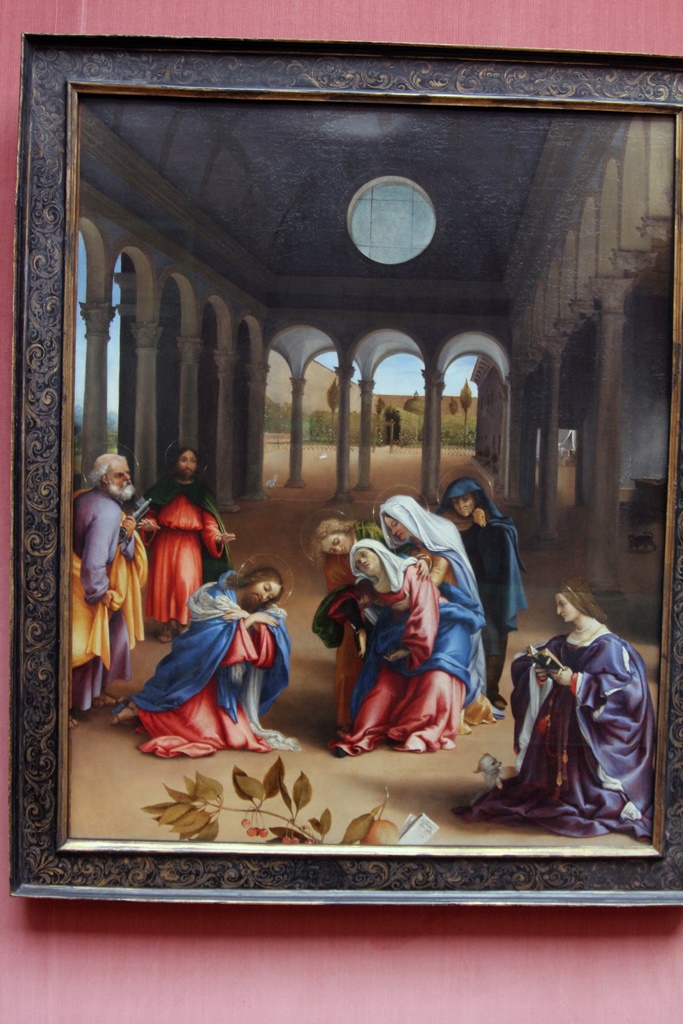
Christ's Farewell to His Mother, Lorenzo Lotto (1521)

St. Augustine in Glory with Angels and Saints, Tuscan Follower of Perugino

Self-Portrait, Titian

Leda and the Swan, Correggio (ca. 1532)
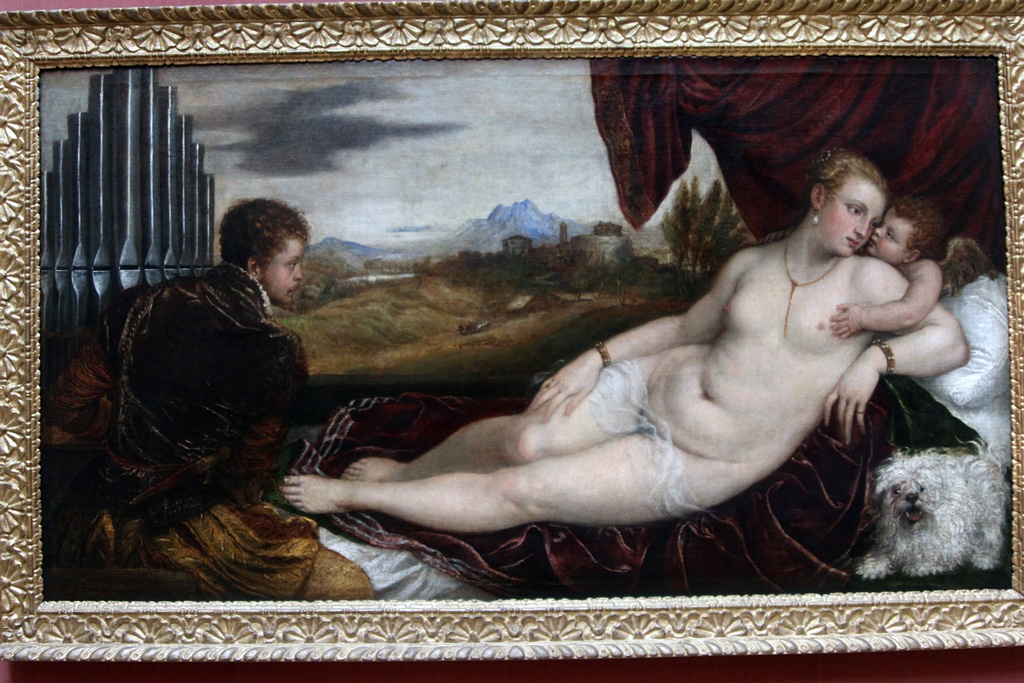
Venus with Organ Player, Titian (ca. 1550-52)
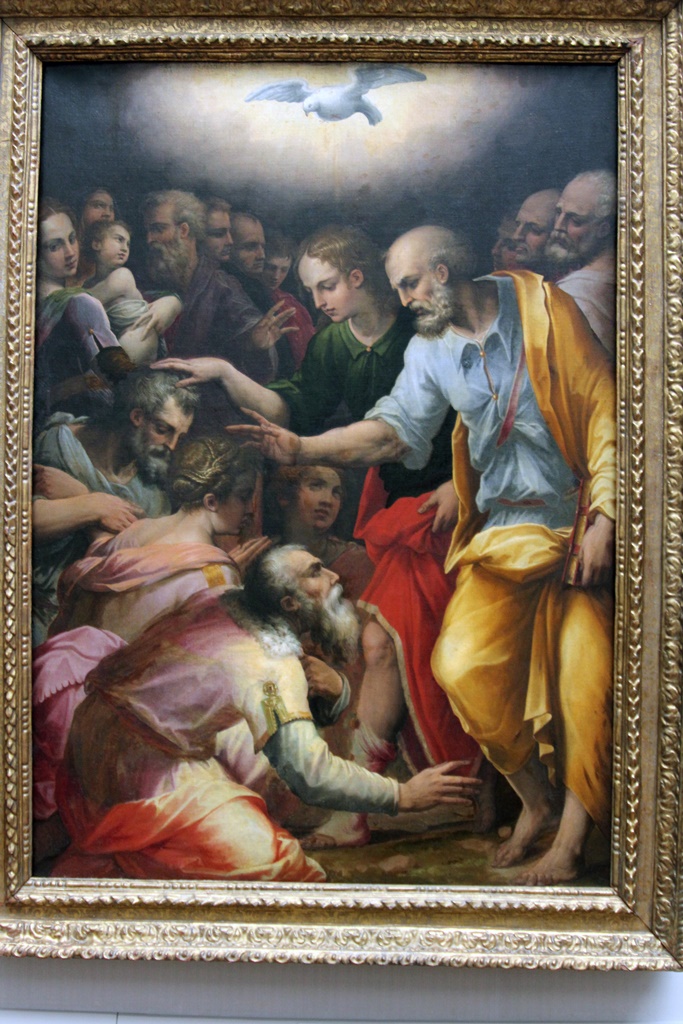
Apostles Peter and John Giving Blessing, Giorgio Vasari (1557)

Mary and Child Adored by Mark and Luke, Tintoretto (Before 1570-75)

Dead Christ Supported by Two Angels, Veronese (Before 1588)
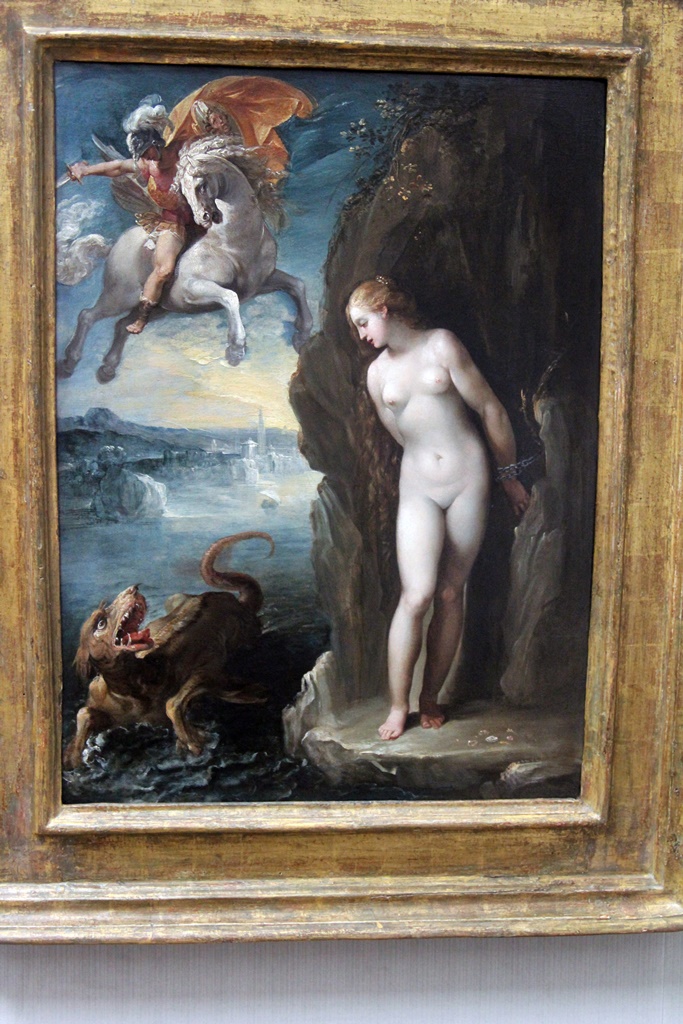
Perseus Frees Andromeda, Giuseppe Cesari (ca. 1594-98)
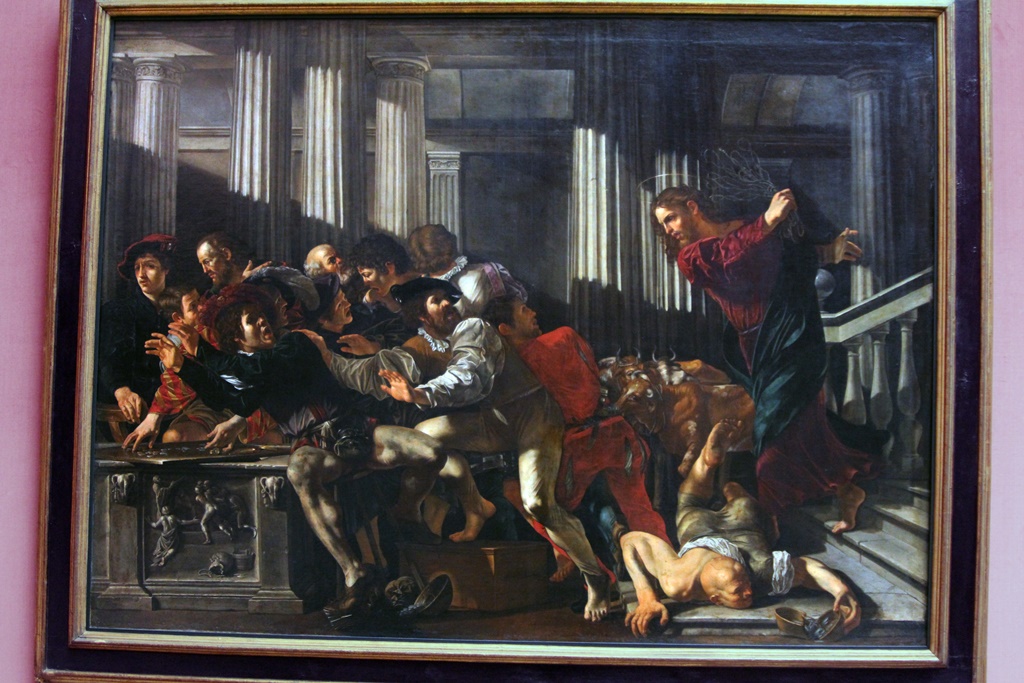
Christ Expels Moneychangers from the Temple, Cecco del Caravaggio (ca. 1610-15)

The Triumph of the Immaculate, Paolo de Matteis (ca. 1710-15)
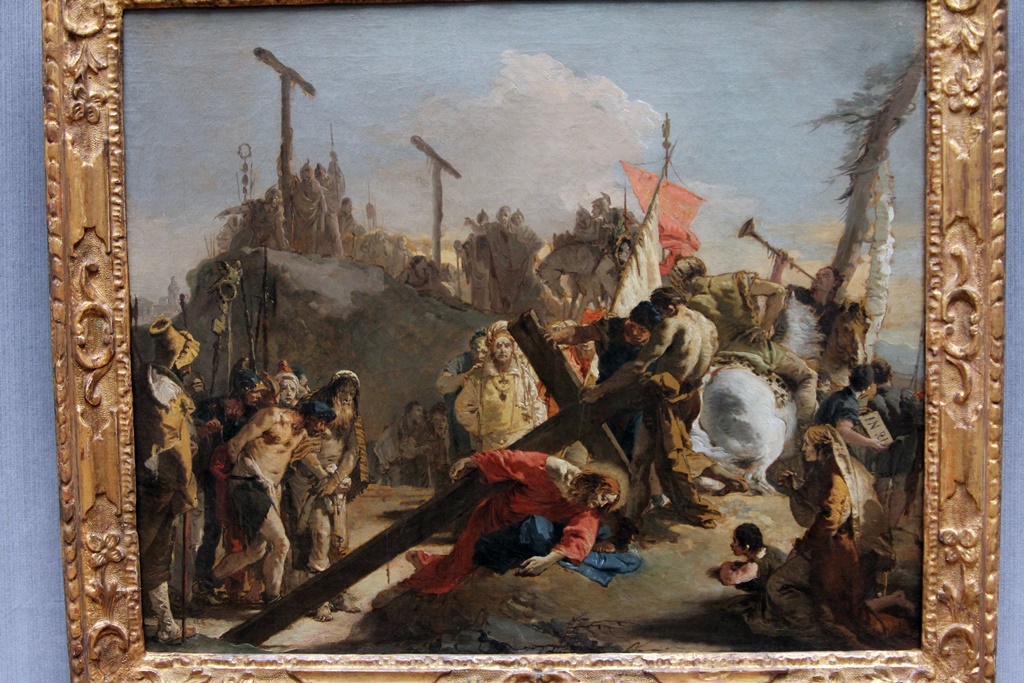
Christ Carrying the Cross, Giovanni Battista Tiepolo (ca. 1738)
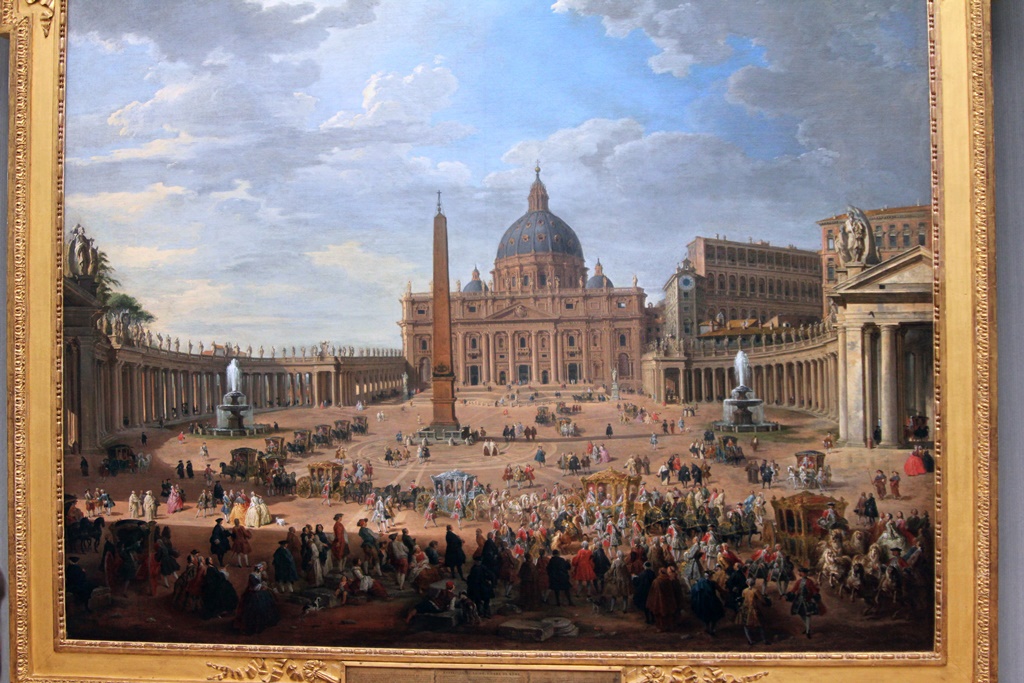
The Duc de Choiseul Exits Saint Peter's Square, Giovanni Paolo Panini (1754)
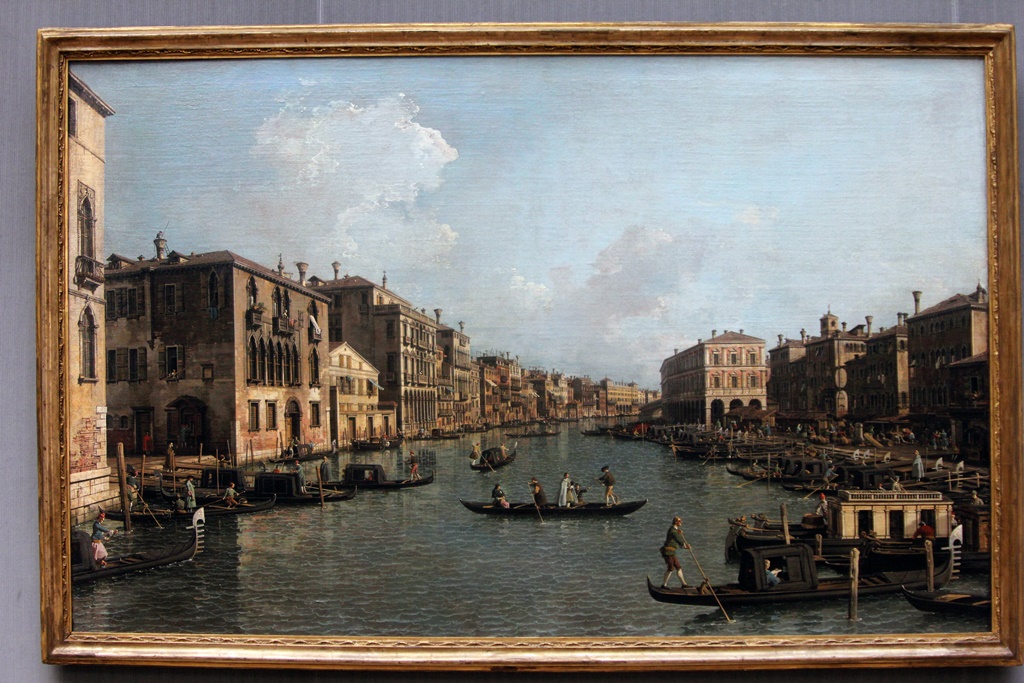
Grand Canal Viewed from the Rialto Bridge, Canaletto (ca. 1758-63)

The Eve of St. Peter, Canaletto (ca. 1758-63)
The Italian and Dutch/Flemish (see below) collections are the museum’s largest,
but other regions are represented as well. Spain, for instance:
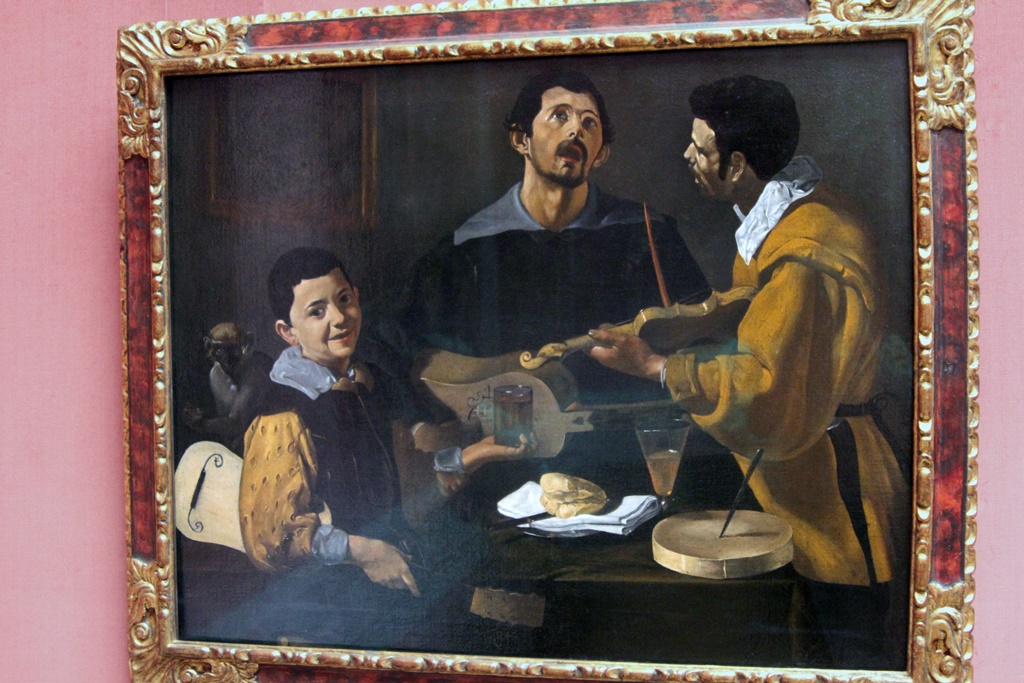
The Three Musicians, Diego Velazquez (ca. 1616-20)
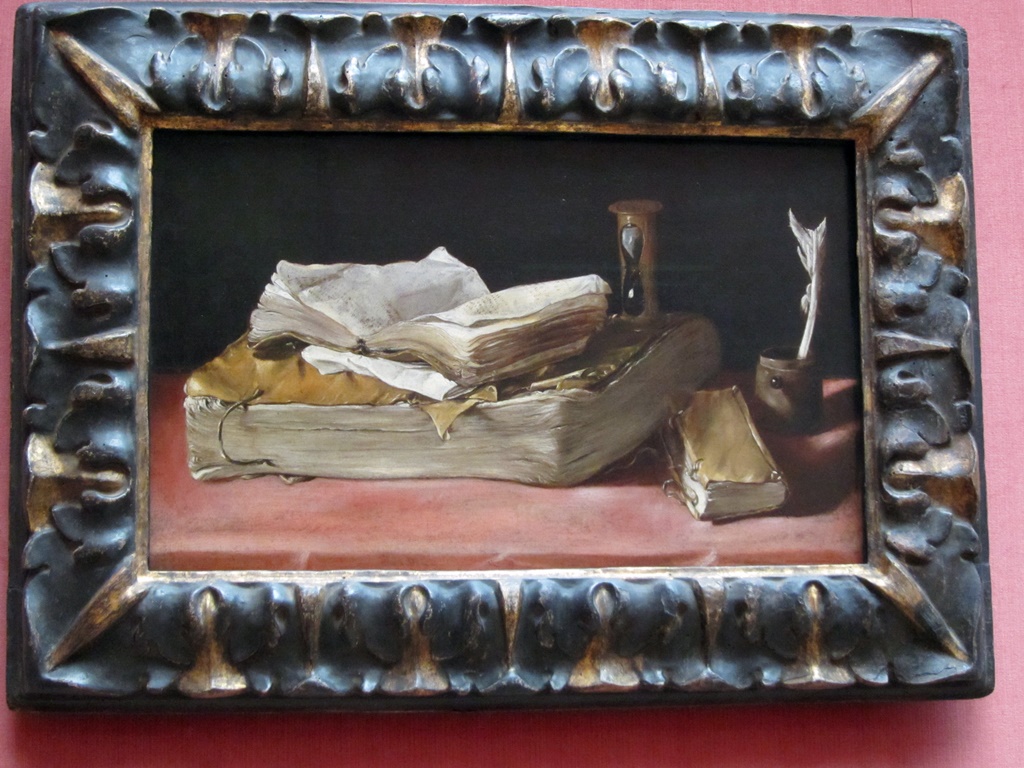
Still Life with Books, School of Madrid (ca. 1630-40)
The Baptism of Christ, Bartolomé Esteban Murillo (ca. 1655)
French paintings can also be found:
Portrait of a Man, Charles Mellin (ca. 1630)
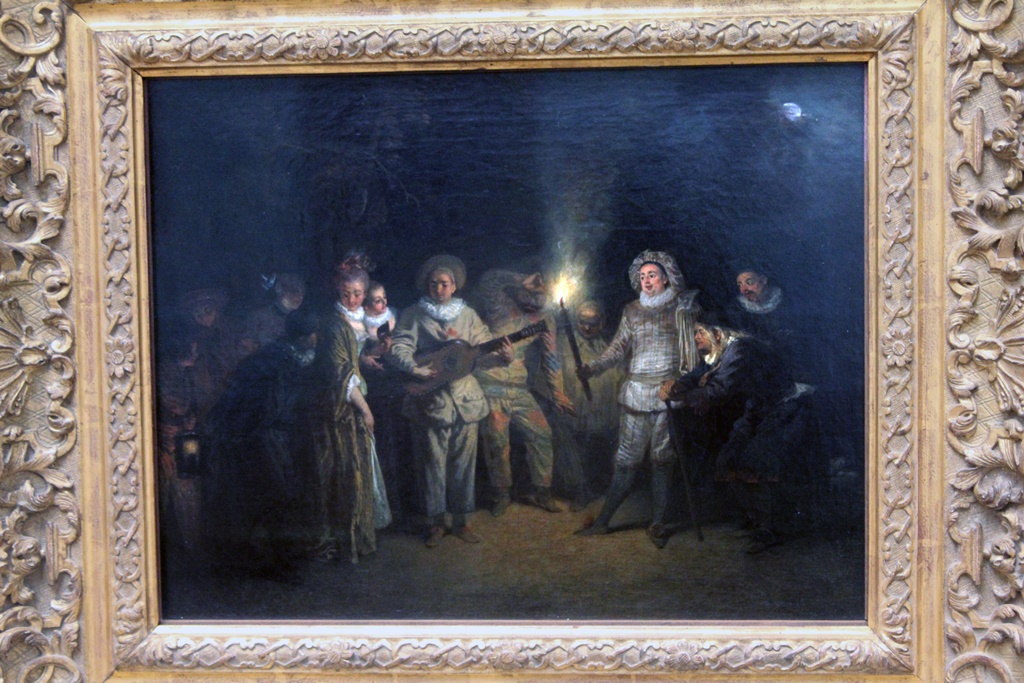
The Italian Comedy, Jean Antoine Watteau (After 1716)

Landscape with Farmhouse, François Boucher (1758)
There is also a large contingent of paintings from the Netherlands and Flanders,
as mentioned above.

Triptych with the Adoration of the Magi, Joos van Cleve (ca. 1520)
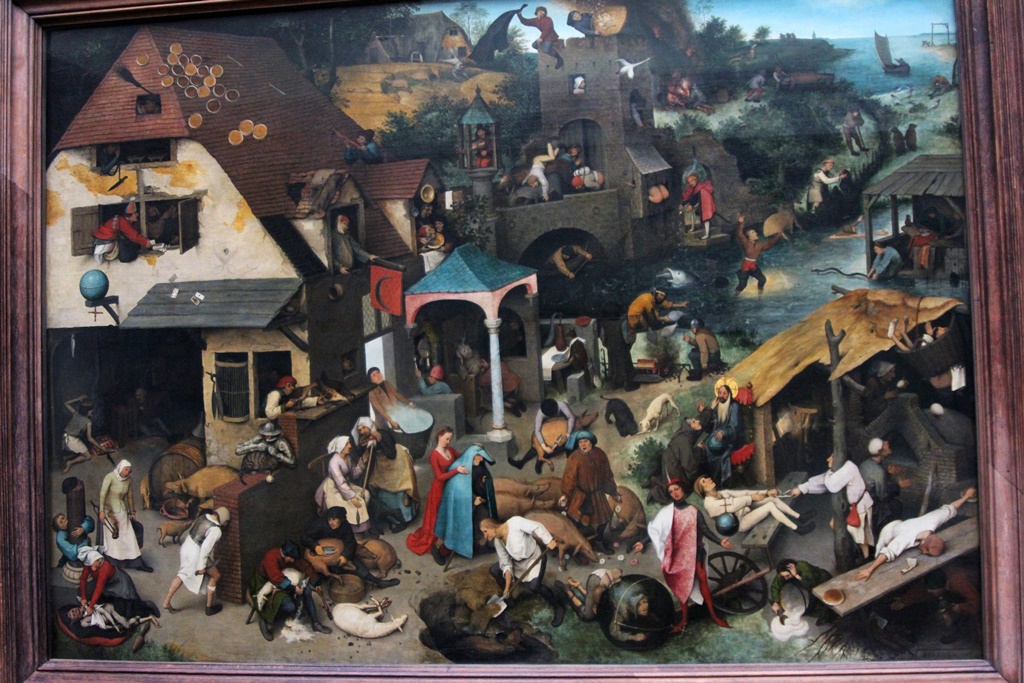
The Dutch Proverbs, Pieter Bruegel the Elder (1559)
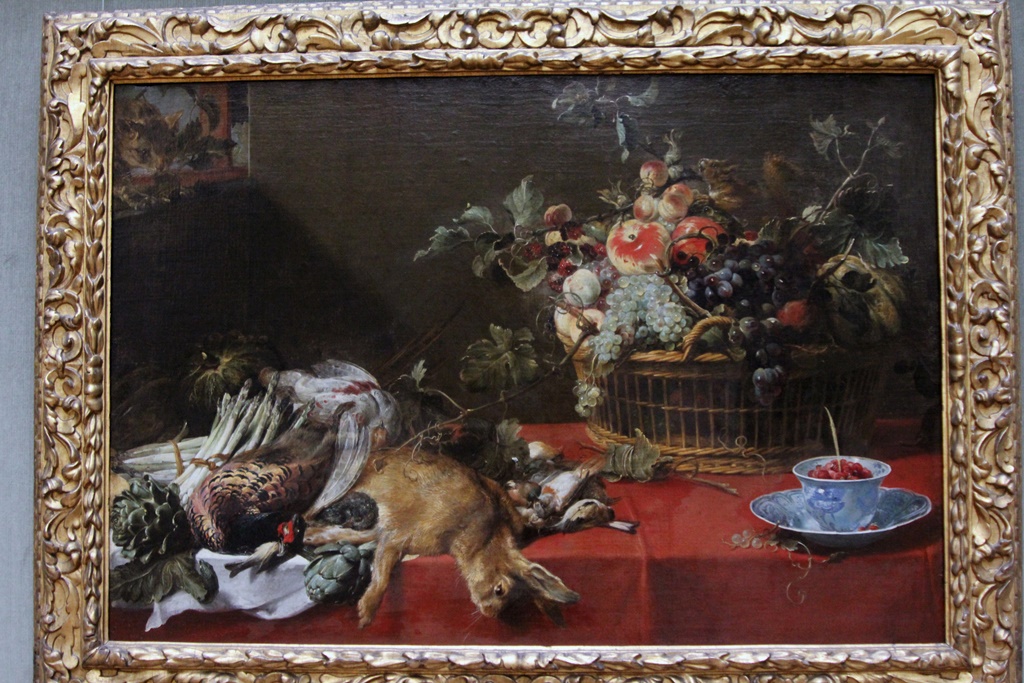
Still Life with Game, Fruit Basket and Vegetables, Frans Snyders
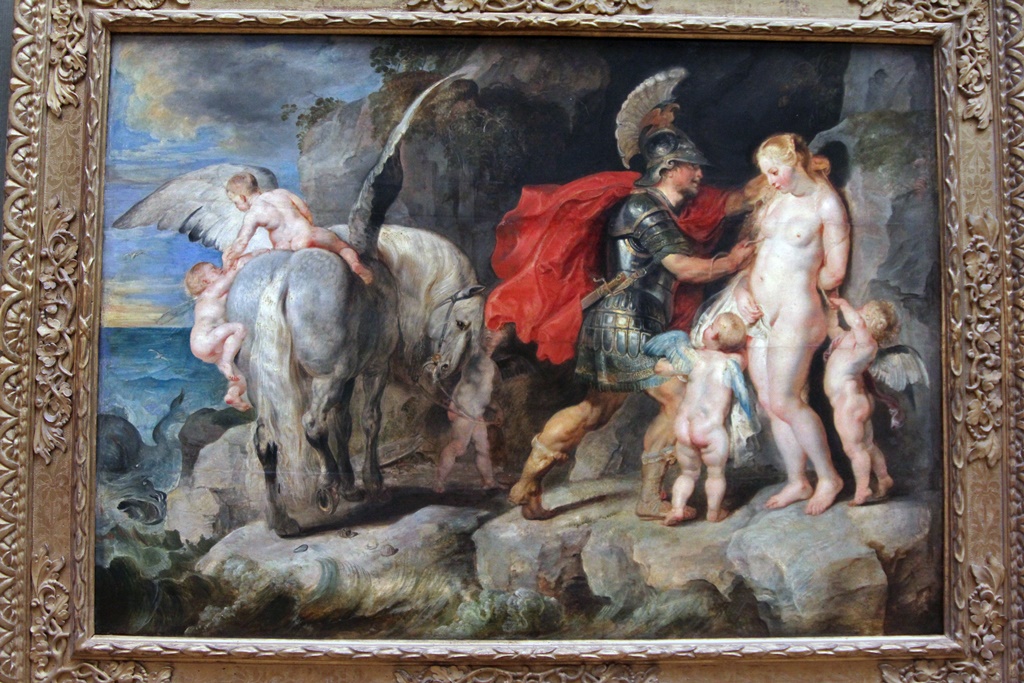
Perseus Frees Andromeda, Peter Paul Rubens (ca. 1620-22)
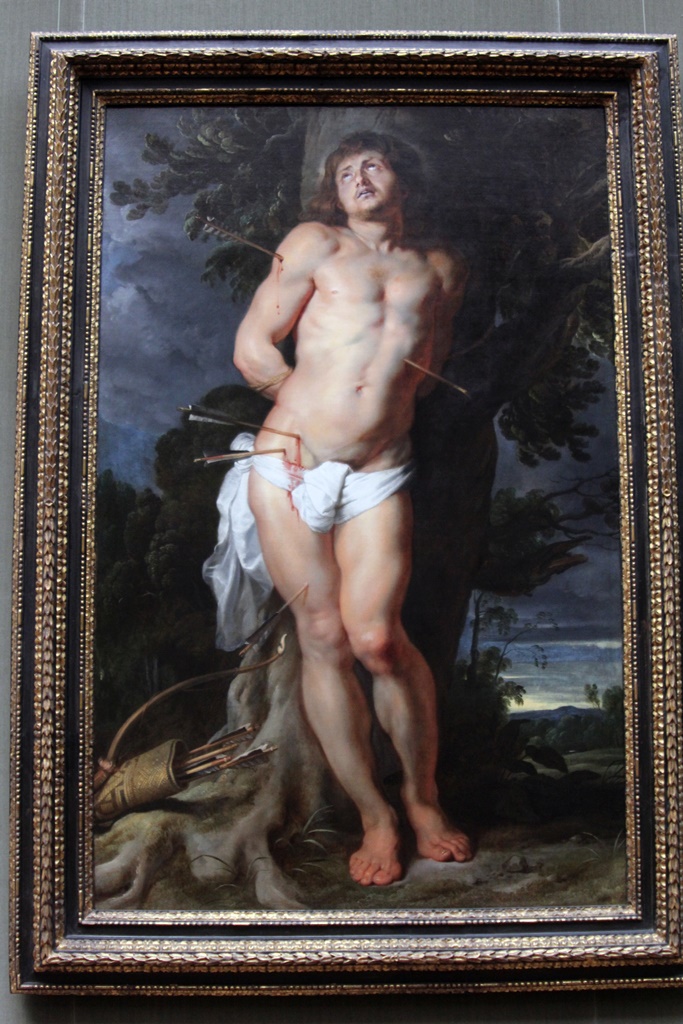
St. Sebastian, Peter Paul Rubens (ca. 1618)
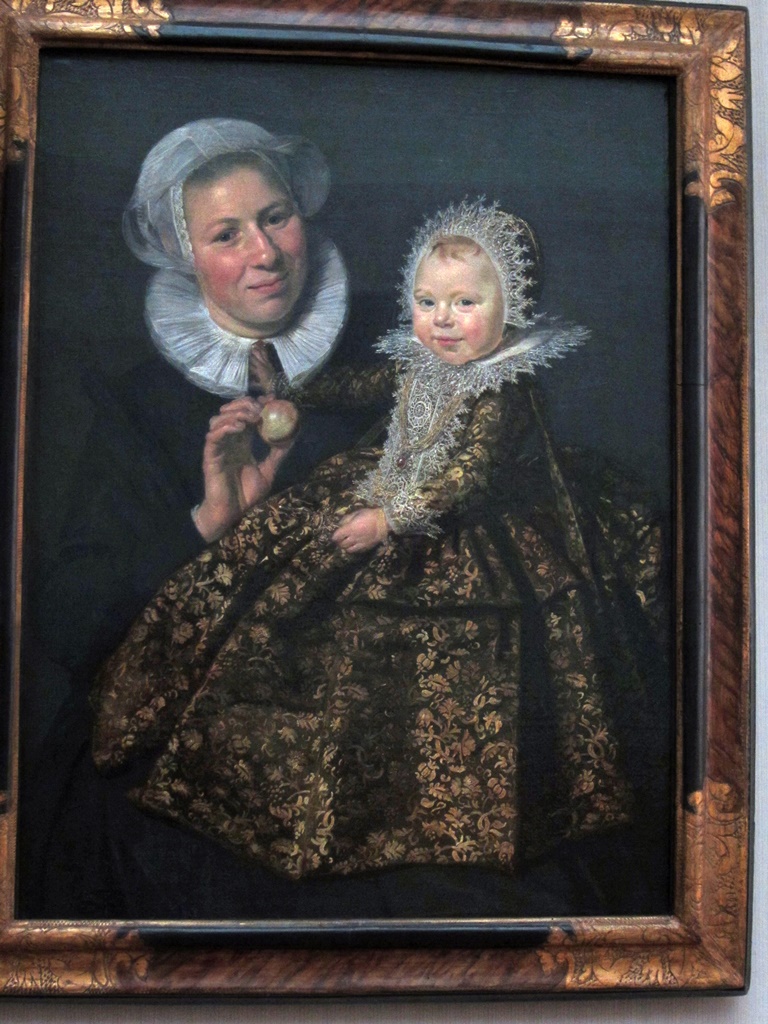
Catharina Hooft and Her Nurse, Frans Hals (ca. 1619-20)
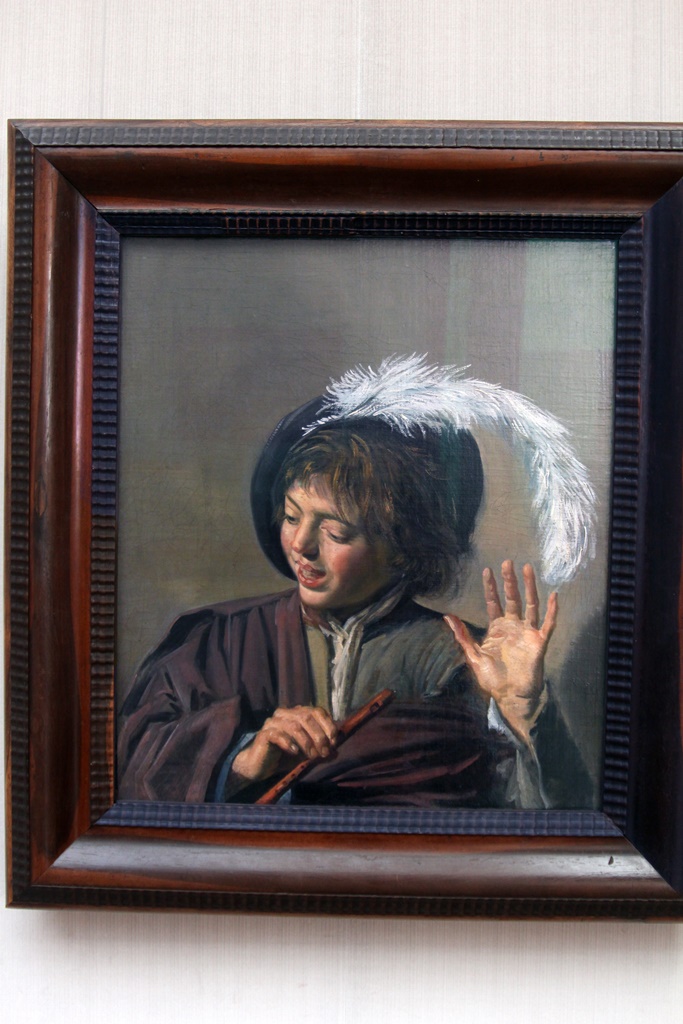
Singing Boy with Flute, Frans Hals (ca. 1623-25)

The Card Cheaters, Wouter Pietersz Crabeth the Younger
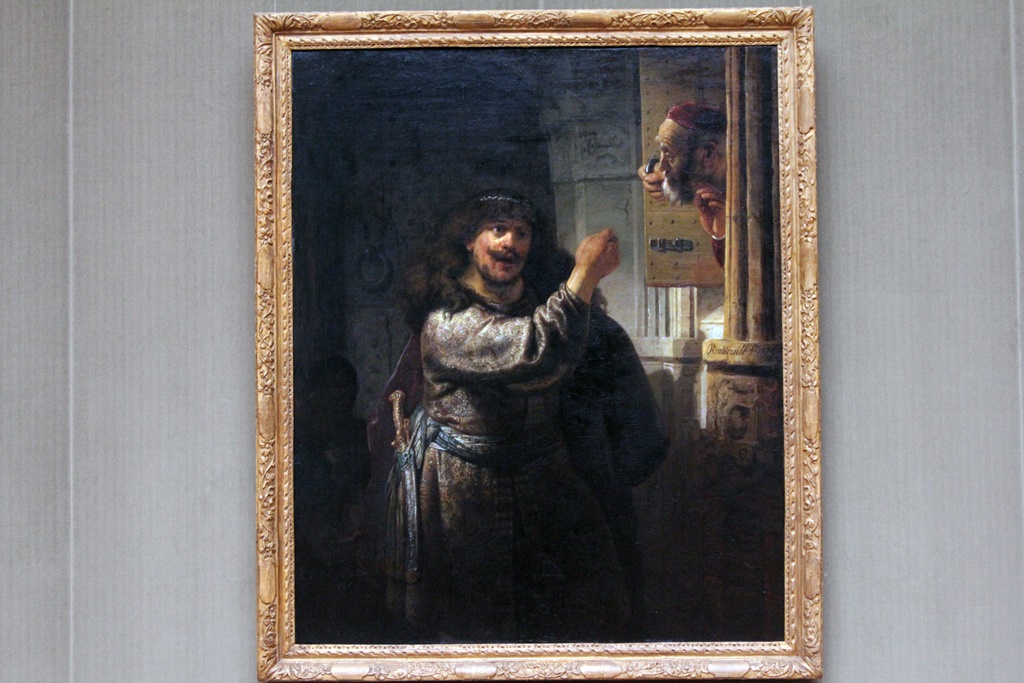
Simson Threatens his Father-in-Law, Rembrandt van Rijn (1635)
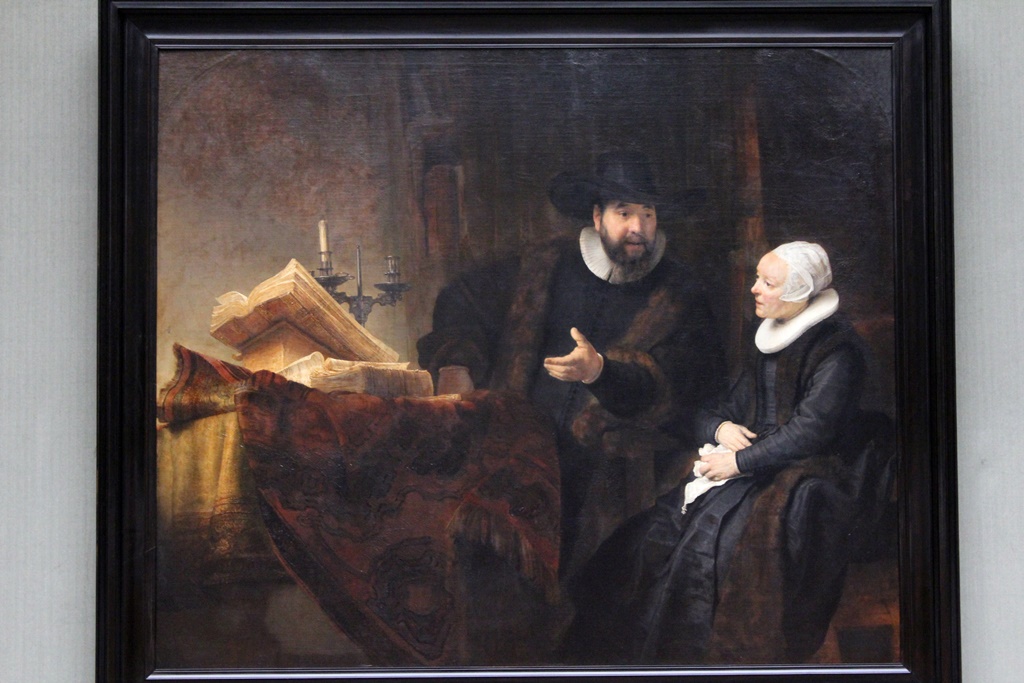
Cornelius Claesz. Anslo and his Wife, Rembrandt van Rijn (1641)
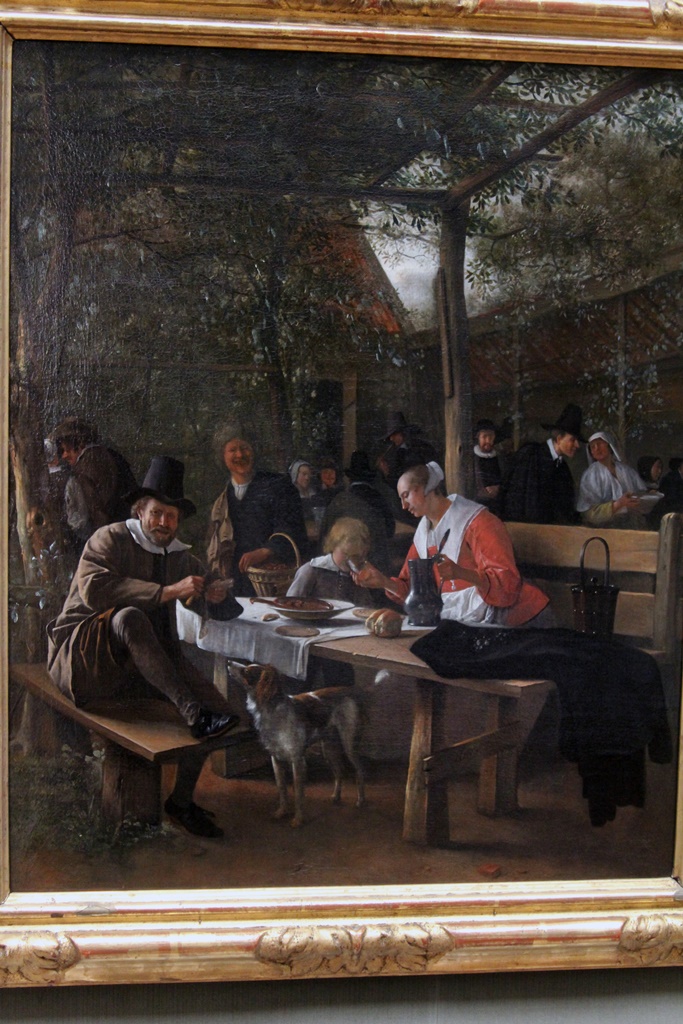
The Tavern Garden, Jan Steen (ca. 1660)
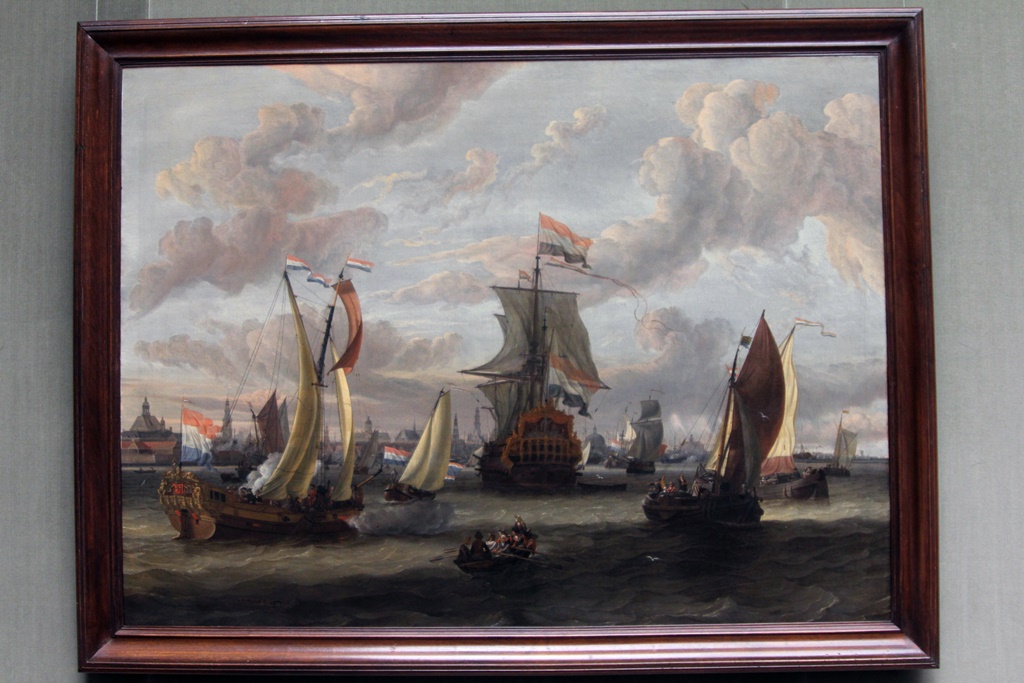
View of Amsterdam with the Ij, Abraham Storck
Finally, there are German paintings. Unfortunately, we had to rush through this
part of the collection, as closing time was fast approaching. Here’s a little
bit of the German collection:
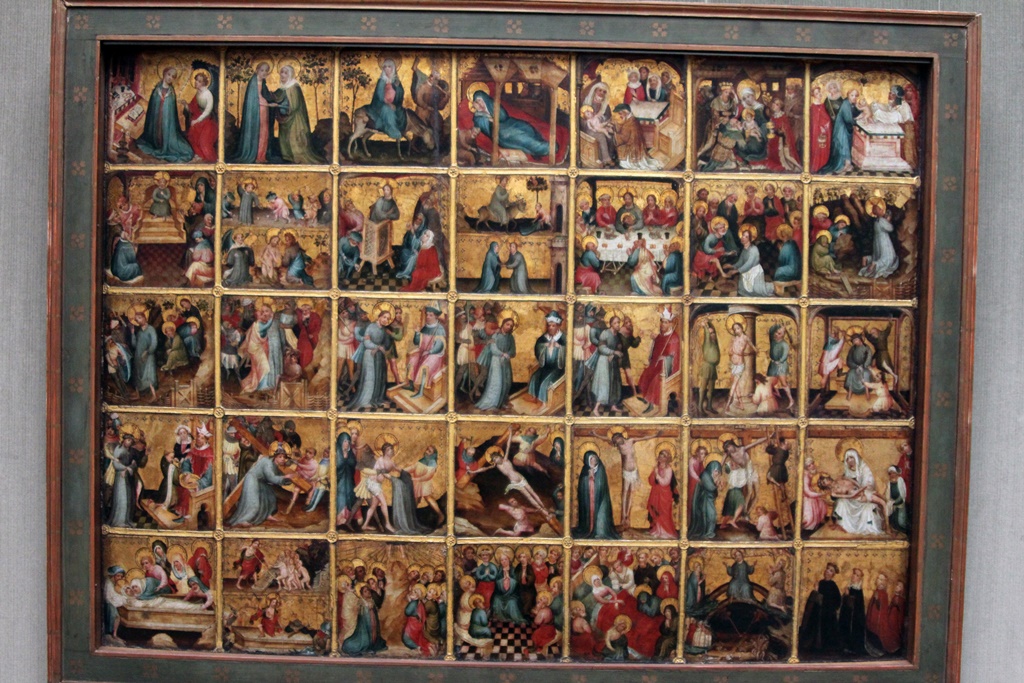
The Life of Christ, School of Cologne
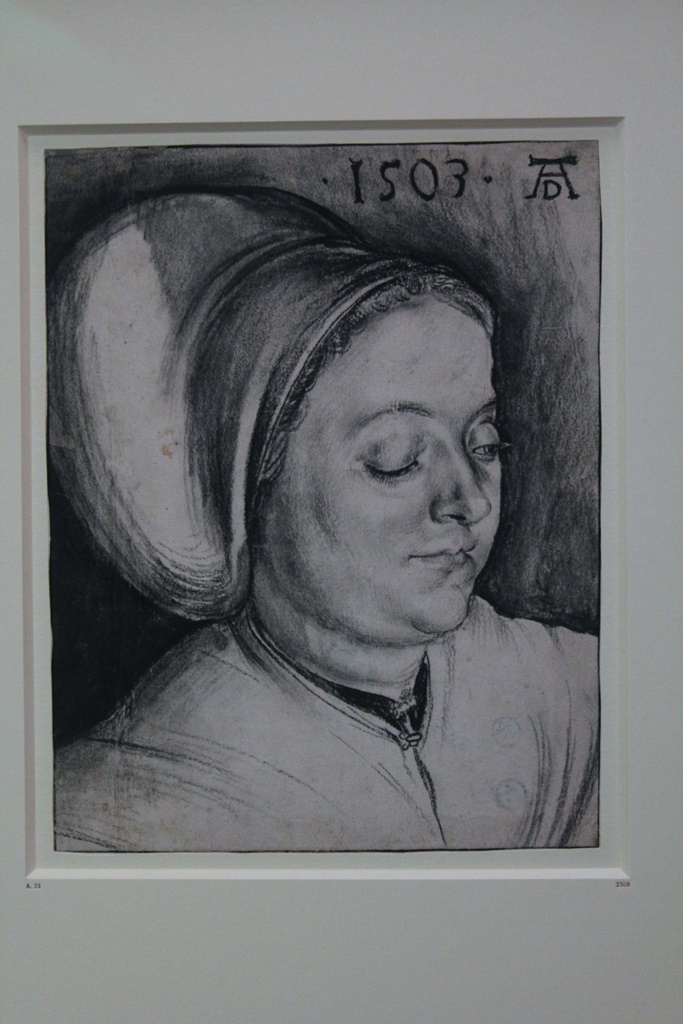
Woman with Hood, Albrecht Dürer (1503)

Venus with Cupid as a Honey Thief, Lucas Cranach the Elder (After 1537)
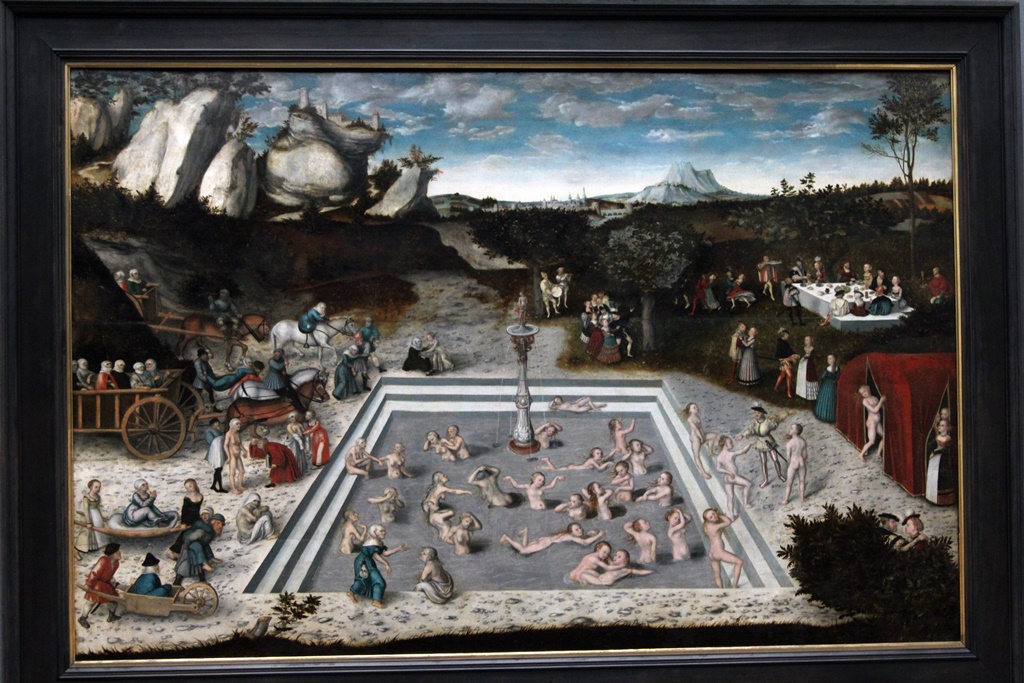
The Fountain of Youth, Lucas Cranach the Elder (1546)
After being unceremoniously hustled from the museum, we returned to the hotel
via the U-Bahn. After relaxing for a bit, we went out for some dinner and
returned to rest up for our next adventure. Our plan was to explore the
Museumsinsel, starting with a visit to the Neues Museum.

